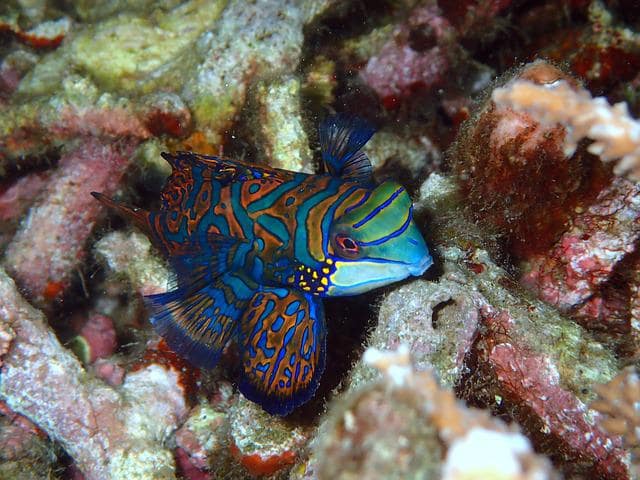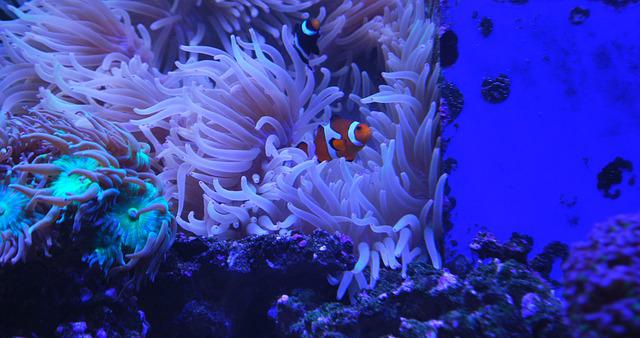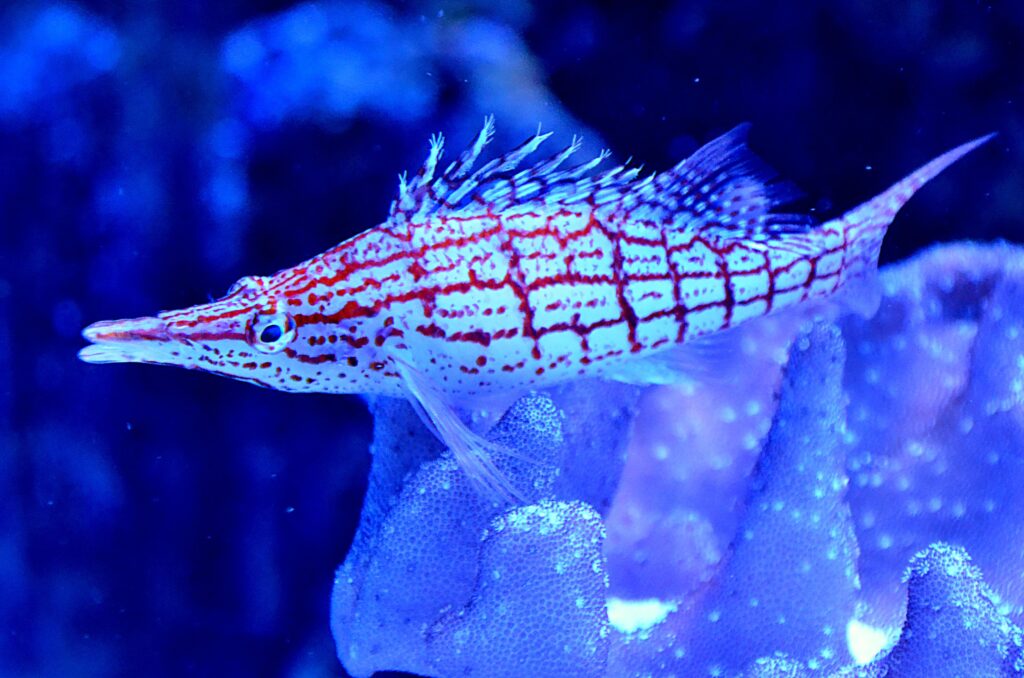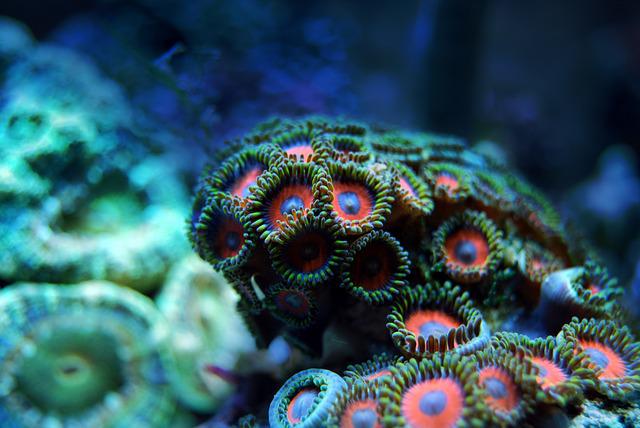
15 Popular Saltwater Aquarium Fish
Blog post excerpt [1-2 lines]. This text is automatically pulled from your existing blog post.
You can use aquariums of any size, but keep in mind that different sizes will have different requirements. While small aquariums need less demanding filtration systems, larger tanks offer increased water stability and can accommodate more fish. The ideal tank will feature glass construction and be devoid of metal, which is vulnerable to corrosion when exposed to saltwater.
You can use aquariums of any size, but keep in mind that different sizes will have different requirements. While small aquariums need less demanding filtration systems, larger tanks offer increased water stability and can accommodate more fish. The ideal tank will feature glass construction and be devoid of metal, which is vulnerable to corrosion when exposed to saltwater.
Because of the heaviness of saltwater, you need a stand that can hold the tank and remain stable. This is why you must invest in a reliable stand built specifically for saltwater aquariums. Oftentimes, the best saltwater tanks are made of durable wood that can sufficiently hold the tank. Many stands also include plenty of storage space.
You can use various types of filtration systems for saltwater aquariums as long as you only intend to keep fish. Ultimately, the number of fish you want to keep and the size of the tank will dictate the type of filtration system you need. Generally, the best filters to use include both sump and canister filters, with sump filters being the ideal option for saltwater tanks.
Canister filters include a canister that sits under the aquarium, and they use a combination of biological and mechanical filtration. Meanwhile, sump filters include a large container and can handle larger tanks.
There are certain filtration methods that work better than others, with the Jaubert or Berlin method being optimal for coral reef aquariums. The Berlin method relies on live rock, while the Jaubert method uses sand. Both of these filtration media enable nitrifying bacteria growth.
The filtration system you use and the size of your aquarium will dictate how many fish you can keep. Typically, you shouldn’t exceed one inch of fish per five gallons of water. However, a reliable filtration system and consistent maintenance may allow the tank to hold more.
The majority of saltwater fish can live for as long as 10 years or longer if you care for them the right way and provide them with a healthy environment. Some fish can live as long as decades when they’re able to thrive.
Yes, fish do sleep at night, which is why it’s best to recreate the natural daylight cycle with your aquarium’s lighting. You can tell when fish are sleeping if you shine a light on the tank and see that they’re seemingly in a daze with more faded coloration.
Some hobbyists may buy saltwater fish that were bred and raised in captivity, which is better for the fish and environment than capturing them in the wild. You can speak with fish store staff to find out whether they have wild fish or species that were bred and raised in captivity.
Aquaculture involves farming aquatic organisms of all types, including fish, shellfish, and crustaceans. In reference to saltwater aquariums, aquaculture entails breeding and raising fish in captivity. Farmers today grow both corals and live rock in the ocean specifically for use in aquariums.
There are several species of fish that are ideal for novice hobbyists to keep in saltwater aquariums. These include damselfish, clownfish, gobies, blennies, and wrasses. They can easily adapt to most environments and generally fare well in varying water conditions.

While rushing the cycling process could be harmful for livestock, there are some ways you can accelerate it. One way is to use live rock or sand, which contains plenty of nitrifying bacteria that kicks off the cycling process. You can also buy nitrifying bacteria directly from fish stores.
Live rock is a type of rock that’s found on the floor of the world’s oceans. The reason it’s referred to as “live” rock is because of the organisms that grow on its surface. These organisms could include nitrifying bacteria, algae, starfish, crustaceans, and sponges that make aquarium environments more conducive to supporting life.
There are a couple of key benefits that come with live rock for aquariums. One advantage is the inclusion of nitrifying bacteria that helps improve the filtration process, potentially without the need for an additional filtration system. Another benefit is aesthetics, as live rock can increase the tank’s visual appeal with a natural look.
You must cure live rock before adding it to the aquarium water. This is due to the death of certain organisms on the rock’s surface that could wind up leaving decaying matter in the tank. You can easily cure live rock by placing it in a bucket or another container filled with premixed saltwater. Adding a pump will circulate the water. At this point, wait for a few weeks for the smell of the dead matter to fade and for the nitrite and ammonia levels to minimize.
You should invest in pre-cured live rock to save you some time and energy by eliminating the need to cure it. Pre-cured live rock will be devoid of dead organisms that are often present on live rock after removing it from the ocean. This organic matter could increase ammonia and nitrite levels to dangerous points. Pre-cured rock allows you to instantly add it to your aquarium without going through a curing process.
The ideal amount of live rock to use in the average aquarium is around one and a half pounds per gallon of water, but this is only if you intend to use it as your main filtration system. Otherwise, you may not need as much unless you want live rock for decorative purposes.
Substrate is material that sits on the bottom of the aquarium, where it adds to the visual appeal of the tank while further filtering the water.
Like live rock, live sand is a type of material from the ocean floor that contains microorganisms and animals that help facilitate aquatic life in aquariums. You can use live sand to implement the Jaubert filtration method, which involves removing organic waste to filter the aquarium.

Invertebrates are generally harder to keep in an aquarium than fish, which is due to their sensitivity to water quality. When keeping invertebrates of any kind, you will need to make sure alkaline and calcium levels are safe, with high-purity water in lieu of tap water. If you plan on keeping this type of livestock, start with snails, hermit crabs, or soft corals that aren’t as demanding.
The main precaution you will need to take when keeping invertebrates in your aquarium is to check alkaline and calcium levels to maintain clean water. You shouldn’t ever use tap water, as it’s not pure enough to sustain invertebrates. Instead, use highly pure water along with an RO/DI filtration system or distilled water.
Like other invertebrates, anemones are challenging to sustain in an aquarium as they need extremely pure water and perfect lighting, along with a minimum level of water flow. Keep in mind that even with the ideal conditions, anemones may not flourish in captivity. However, clownfish respond to soft and torch coral much they way they do with anemones.
Similar to invertebrates and certain types of fish, corals are difficult to maintain in aquariums. They need excellent water chemistry and quality, along with proper water flow and lighting conditions. Generally, the easiest type of coral to keep is soft coral, which doesn’t require the impeccable conditions that hard coral needs.
You can keep both soft and hard corals in reef aquariums, but you will need to make sure the water conditions are near-perfect. You can find soft corals in the form of small polyp colonies, including gorgonians and leather corals. They’re also available in large colonies such as mushroom and button corals. Hard corals include Large Polyp Stony (LPS) and Short Polyp Stony (SPS) corals. LPS corals are easier to maintain because of their large polyps, while SPS corals are more difficult to maintain due to their short polyps.
Fragging involves cutting pieces of coral to grow new corals. These pieces are referred to as “frags.” Aquarium stores often rely on the fragging process to grow new coral to sell. It’s also an ethical way to reproduce coral.
Saltwater needs to maintain the right salinity to accommodate life. You can measure salinity using the water’s specific gravity, which should be approximately 1.025. In some cases, you may want to reduce salinity even more to prevent the growth of parasitic bacteria, but you should avoid salinity levels lower than 1.019. Lower salinity levels create an unpleasant environment for fish.
For coral reef aquariums, you will measure salinity via specific gravity. The specific gravity of coral reef aquariums should be around 1.025 to 1.028, which will create a healthy environment for fish while preventing the growth of harmful bacteria.
You will need plenty of light for a coral reef aquarium, which is due to the coral’s zooxanthellae content, which is a symbiotic algae that converts light to food that sustains the coral. While you shouldn’t use actual sunlight to light your tank, you should use a high-intensity LED light if possible, but you can also use a metal halide and fluorescent light mix. Ideally, light should be four to eight watts per gallon of water, with the depth of the tank no greater than 24 inches.
You can measure the salinity of saltwater using three main instruments. The most accurate instrument is modern salinity monitors or refractometers, which work electronically to measure salinity. You also have the option of using an old-fashioned and more affordable hydrometer, which normally consists of a floating indicator within a plastic container. The indicator shows the salinity level when you add water to the container.
Fluorescent lights made for aquariums are usually sufficient for lighting saltwater aquariums, with one to two watts per gallon being the ideal level. Keep in mind that you don’t need a specific spectrum or color for your lights as fish don’t respond to these the way coral does. This means you can use any color you want for your aquarium.
The length of time you light your tank will depend on the type of aquarium you have. For tanks containing only fish, leave the lights on for around eight to 10 hours per day, which will replicate a typical day outside. For coral reef aquariums, leave lights on for a minimum of 10 hours per day, as the algae in coral requires ample light to flourish. You can also use two sets of lights to replicate sunrises and sunsets, which is even more conducive to a healthier environment for fish and invertebrates.

Unless you’re a more experienced hobbyist, you should avoid keeping fish that are extra-sensitive to water quality. Two notorious species include tangs and angelfish. Also, butterflyfish and lionfish are more difficult to maintain, the latter because of its need for live food. Seahorses also require live food and are best kept isolated from other fish.
At the fish store when shopping for the right fish, take a close look at them to make sure they’re healthy. They should have pronounced colors and be clear of white spots and marks of any kind. You may also be able to feed them and see how they respond to feeding. If you’re shopping for coral, select coral with open polyps and make sure it’s fully alive.
You can acclimate fish using a clean bucket and the water you brought them home in. Slowly introduce the water from the aquarium to the bucket, which you can do using either a tube or measuring cup. Within about 30 to 60 minutes, add three times as much aquarium water as original water. Using a net, you’ll then be able to add fish or invertebrates to the aquarium, transferring them from the bucket. However, ensure that no water from the store mixes with the aquarium water, as this water often contains toxic copper to temporarily protect fish from diseases.
It is possible to keep sharks in an aquarium, but they’re among the most difficult fish to maintain. Like other types of difficult fish, they survive on live food, and they’ll also require ample swimming space. Over time, the shark could grow to the point where it’s nearly impossible to keep it. The most commonly kept sharks are Coral Banded Sharks.
As you prepare your new aquarium, you need to properly cycle it prior to introducing fish to it, which is a process that takes around two to eight weeks. This involves adding ammonia to the water by feeding the fish once you’ve set up the filtration system. Every week, you’ll need to measure the levels of ammonia, nitrate, and nitrite in the water. You also will need to add bacteria to the tank. Most stores have great Seachem products to choose from.
The nitrogen cycle is a type of natural cycle that involves converting nitrogen into different types of chemicals. This particular cycle begins when fish excrete ammonia. The process then entails converting this ammonia into nitrite using nitrifying bacteria, another type of which converts the nitrite into nitrate. You can keep this process smooth and create a healthy environment for fish and other animals by regularly changing the water.
After cycling the aquarium, you can gradually introduce fish or other animals to the tank. A good strategy is to add one or two fish about two weeks in, followed by waiting about a month before adding more. After the filtration system handles the buildup of ammonia and nitrite, you can start adding a couple more fish before waiting another few weeks to add more if needed.

To create the ideal environment in your aquarium, use substrate that has high calcium content. Some good options include fine sand (i.e. aragonite) and crushed coral, which is considerably coarser. Another substrate you can use is live sand, which contains plenty of beneficial organic life to help filter the aquarium.
When looking for live rock to add to your aquarium, choose low-density pieces to avoid paying too much when buying it by the pound. Not only is less dense live rock lighter, allowing you to buy more of it, but it also allows for bacterial growth while giving livestock places to hide.
Coralline algae often grows on live rock, giving it a pink, red, or purple color. If you see coralline algae in your aquarium, this indicates a healthy, clean environment.
Live sand is good for aquariums because of the microorganisms and animals it contains. These lifeforms help filter the water and create a healthy environment for livestock.
There are several types of invertebrates you may not want to keep in your aquarium because of their difficult maintenance. Some examples include crabs, shrimp, clams, anemones, and oysters, all of which require pristine living conditions to survive. Some invertebrates, such as brittle stars and serpent stars, may also consume fish in the tank.
Although it’s possible to keep an octopus in an aquarium, they are expensive and high maintenance. If you intend on adding an octopus to your aquarium, make sure there aren’t any fish in the tank that the octopus might eat. Keep in mind that they can also easily climb out of the aquarium without properly securing them. Also, understand that your octopus isn’t likely to live longer than two years.
If you see what looks like a dead crab or shrimp only to see it alive again, this indicates that the animal has molted. Shrimp, crab, and other hard-shelled invertebrates must shed their shells to accommodate growth. Immediately after molting, the invertebrate hides while their new shell hardens. Meanwhile, the discarded shell closely resembles the living animal.

It’s best to avoid purchasing coral that’s harvested from the sea. Instead, look for coral that’s grown using the fragging method of reproduction. Fragging involves cutting pieces of coral known as frags, which then grow into new coral. Ask your local fish store about how they obtain their coral.

Blog post excerpt [1-2 lines]. This text is automatically pulled from your existing blog post.